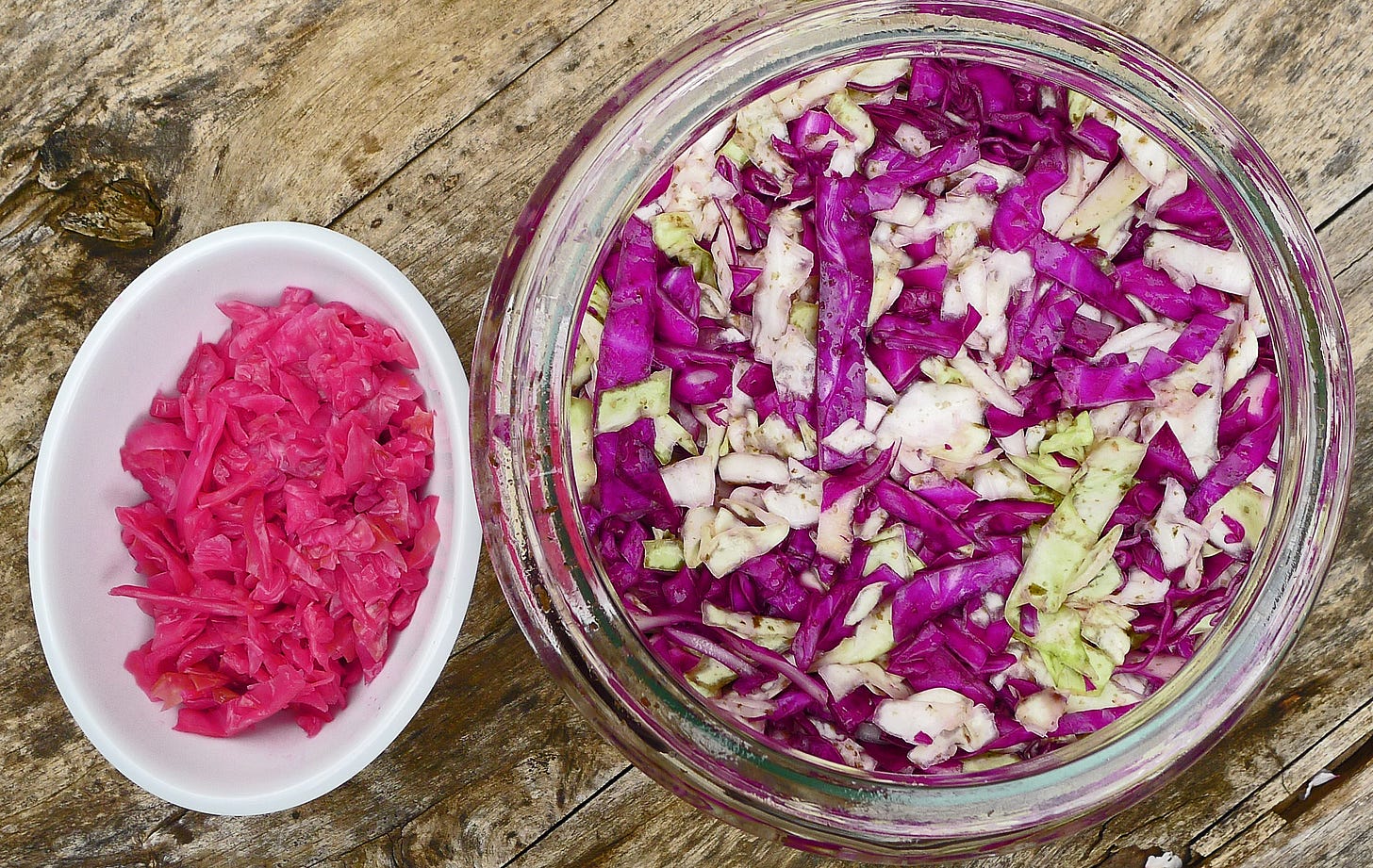Cabbage Rocks!
"A staple of cuisines around the world is having a star turn on the American culinary scene,” was the unlikely lead of the New York Times newsletter last week.
“If I were a vegetable, I would hire cabbage’s brand manager,” writes Kim Severson, describing how “cabbage has spent an eternity as the workhorse of the stir-fry and the braise […] It never complained, even when boiled with corned beef […] But today, a vegetable that can make your house smell like a 19th-century tenement is the darling of the culinary crowd,” she writes with disbelief, quoting chef Michael Stoltzfus of Coquette in New Orleans who thinks cabbage is what bacon was in the ‘90ies!
Roasted cabbage is the new craze: Nolan restaurant in Athens serves a salad of deliciously ‘burned,’ caramelized winter vegetables –pieces of cabbage, cauliflower, broccoli— dressed with a lovely Asian-inspired sauce. “Roasting cabbage wedges at high heat makes them crisp at the edges and tender in the middle,“ writes Melissa Clark in NYT Cooking. Her recipe, the very first I encountered of roasted cabbage wedges –many have been published since– inspired me to try my version.
I omitted the anchovies and parmesan but added both soy and fish sauce, as well as a large pinch of my favorite hot Florina smoked pepper, along with plenty of rosemary, which I think complements beautifully my Asian-Mediterranean roasted cabbage. Costas and I loved it, and we make it quite regularly these days. It accompanies beautifully any kind of meat or chicken, but we also eat it with the wonderful olive-oil-fried eggs from our neighbors’ hens, and feta cheese.
In our part of the world, cabbage is primarily the star winter salad, thinly shredded, with or without carrot strands, simply dressed with fresh lemon juice and fruity olive oil. In fact, I like to taste the newly pressed oil on my lahanosalata (cabbage salad) where its aromatic hint of bitterness beautifully complements the sweetness of the cabbage.
“You can’t have tender, sweet cabbage before the winter cold,” a farmer on Kea told me one October morning.
Once, a few years back, when water was more plentiful on the island, we planted a few cabbages in the garden. We had a meager, colorful crop, and because I didn’t cut the tiny heads in time thinking that they would grow, they bolted and bloomed on the inside!
The trick to turn almost any cabbage into a good salad is to “knead” the finely shredded leaves with salt and lemon juice. Our latest, more sophisticated salad is dressed/marinated with orange juice and vinegar instead of lemon. Left to macerate in the fridge for at least overnight, the cabbage and carrots wilt and shrink, becoming juicy and absolutely delicious.
All through the winter and until late spring we keep in the refrigerator a box of shredded cabbage, replenished every 2-3 days. It is the base for our copious daily salads, enriched with arugula, radicchio, lettuce, tender spinach leaves, and occasionally some tiny tomatoes from the greenhouses of Crete that manage to have taste even in the winter.
My pink fermented cabbage is a far cry from the heavy, foul-smelling sauerkraut; this is a vividly-colored, tangy-fruity cabbage that you can eat on its own, as part of a meze spread, or add it to any of your winter or spring salads.
Local cabbages are often huge this time of the year but not particularly heavy. By February gardeners on the island pick the remaining cabbages from their gardens, as they start to prepare the soil for the spring and summer vegetables.
The heads are no longer tight and compact because the cabbage leaves start to loosen as the central stem grows. For us now is the ideal time to make lahano-dolmades, or yaprakia (stuffed cabbage leaves). It is much easier to separate the outer leaves of these late-season cabbages to blanch and stuff them.
Our neighbor Stathis gave me two large cabbages the other day, as he was digging out his winter garden. He got six cabbages, more than his wife Ela could use.
With the outer leaves I made Stuffed Cabbage Logs (just invented the title), because I had far too much stuffing and no time to wrap and roll lots of individual cabbage leaves.
These logs are a cross between stuffed cabbage leaves, meatloaf and pâté, as I slow-cook them in bain marie, in the oven, just like the traditional French pâté. You can cook regular stuffed cabbage leaves this way as well if you like them to cook evenly, making sure that they won’t burn at the bottom of the pan.
We have plenty more cabbage recipes in our tradition, which we rotate these days, before the spring vegetables arrive. Lahanoryzo (cabbage risotto) is Costas’ favorite, and a common vegan meal for Greeks who observe Lent.
Costas prefers the version with tomato, although many people like it white, adding leek or chopped scallions, and of course plenty of lemon, and some dill at the end.
Tonight, I will be in DC with the mighty Jose Andres at the Lincoln Theater, taking part in the lively event to introduce the wonderful new Zaytinya Cookbook!

















As a cabbage lover, I found your article so interesting. I look on cabbage as an under-appreciated culinary hero.